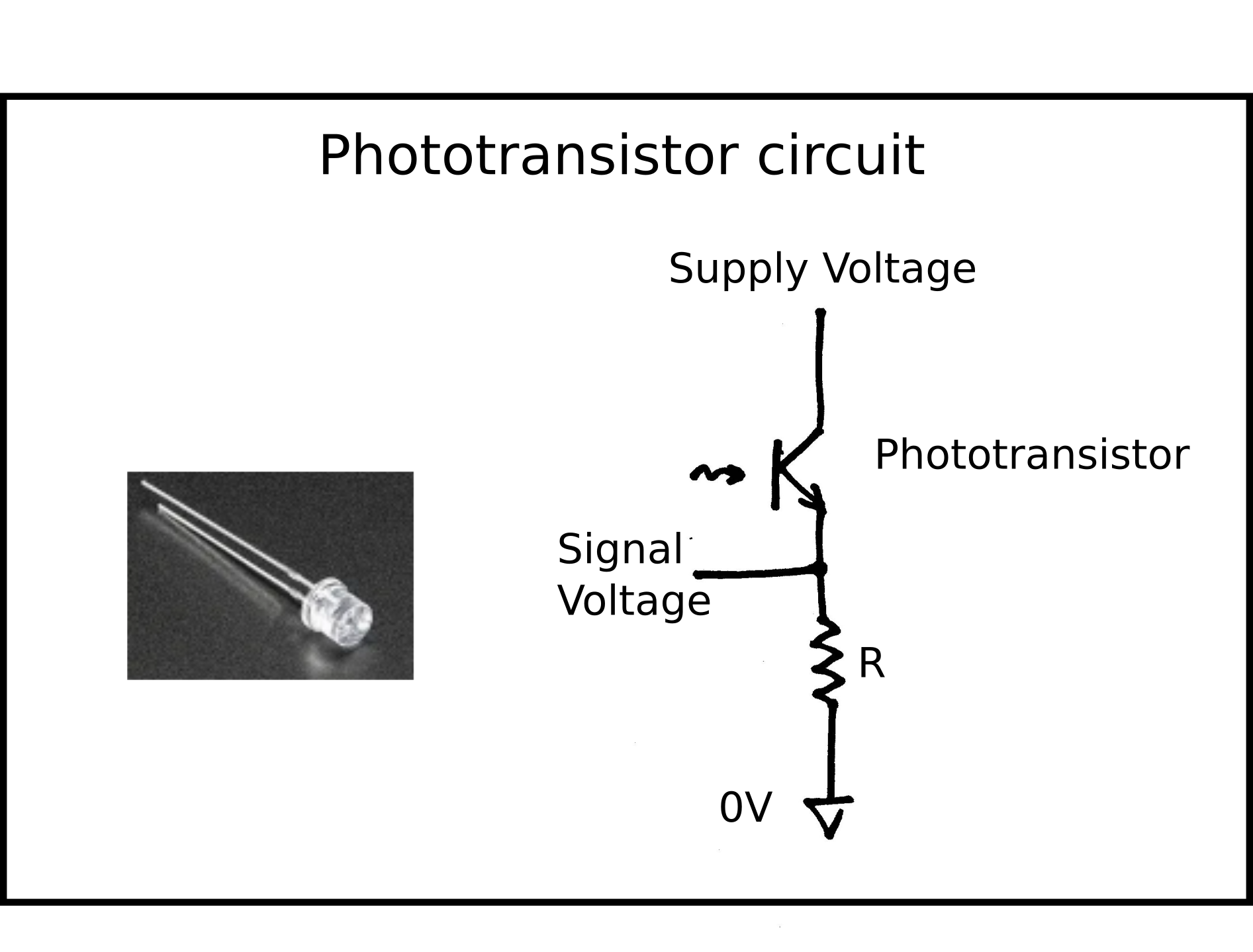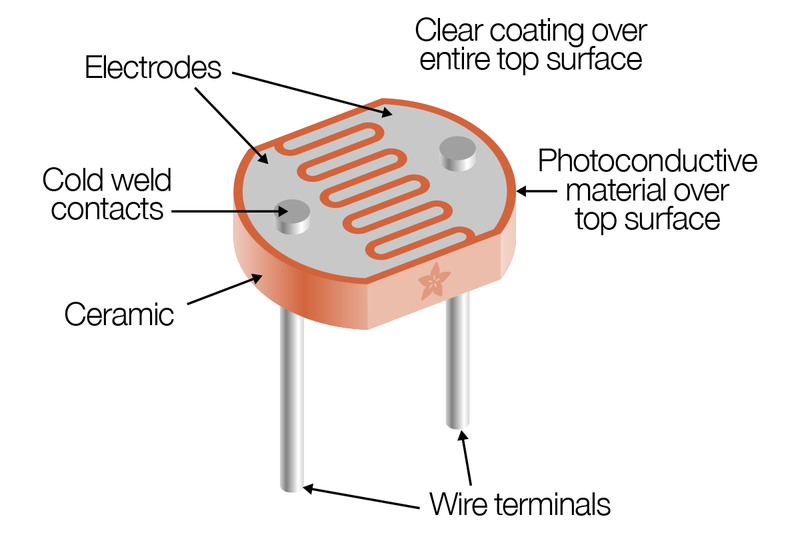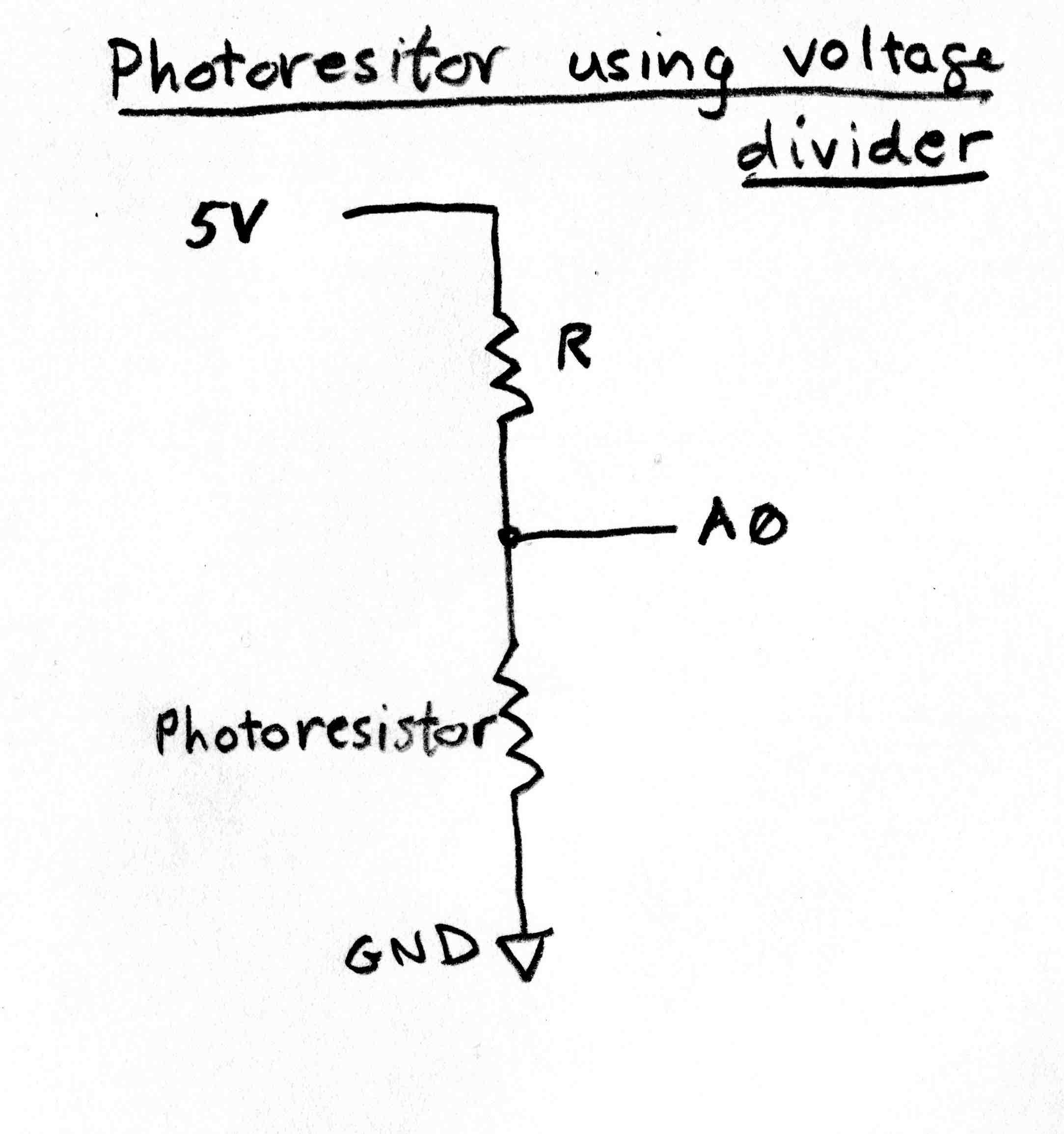## Light Sensors
| Features | Phototransistor | Photoresistor |
|-----------------|---------------|---------------|
| Sensitivity to light | Low | High |
| Directional | No | Yes |
| Resistance changes? | No | Yes |
<!-- The performance of the phototransistor can be superior to that of the photodiode for some applications in view of its gain. As a rough guide, where a photodiode may enable a current flow of around 1µA under typical room conditions, a phototransistor may allow a current of 100µA to flow.
-->
### Phototransistor
A phototransistor conducts more or less current as a function of light level. The signal is just the current times the resistance R. Sensitivity can be changed by changing the value of R in the range 1 kOhm - 100 kOhm. We have phototransistors that are sensitive in the visible and others sensitive in the near infrared.

LDRs (light dependent resistors) are very popular and cheap, but not very accurate. See [Adafruit's](https://learn.adafruit.com/photocells) documentation.

### Photoresistor
A photoresistor changes its resistance as a function of light. As it receives more light its resistance decreases, and the voltage at the point labeled A0 decreases. Any of the analog inputs A0 - A5, could be used (see the AnalogReadSerial example for Arduino code).
